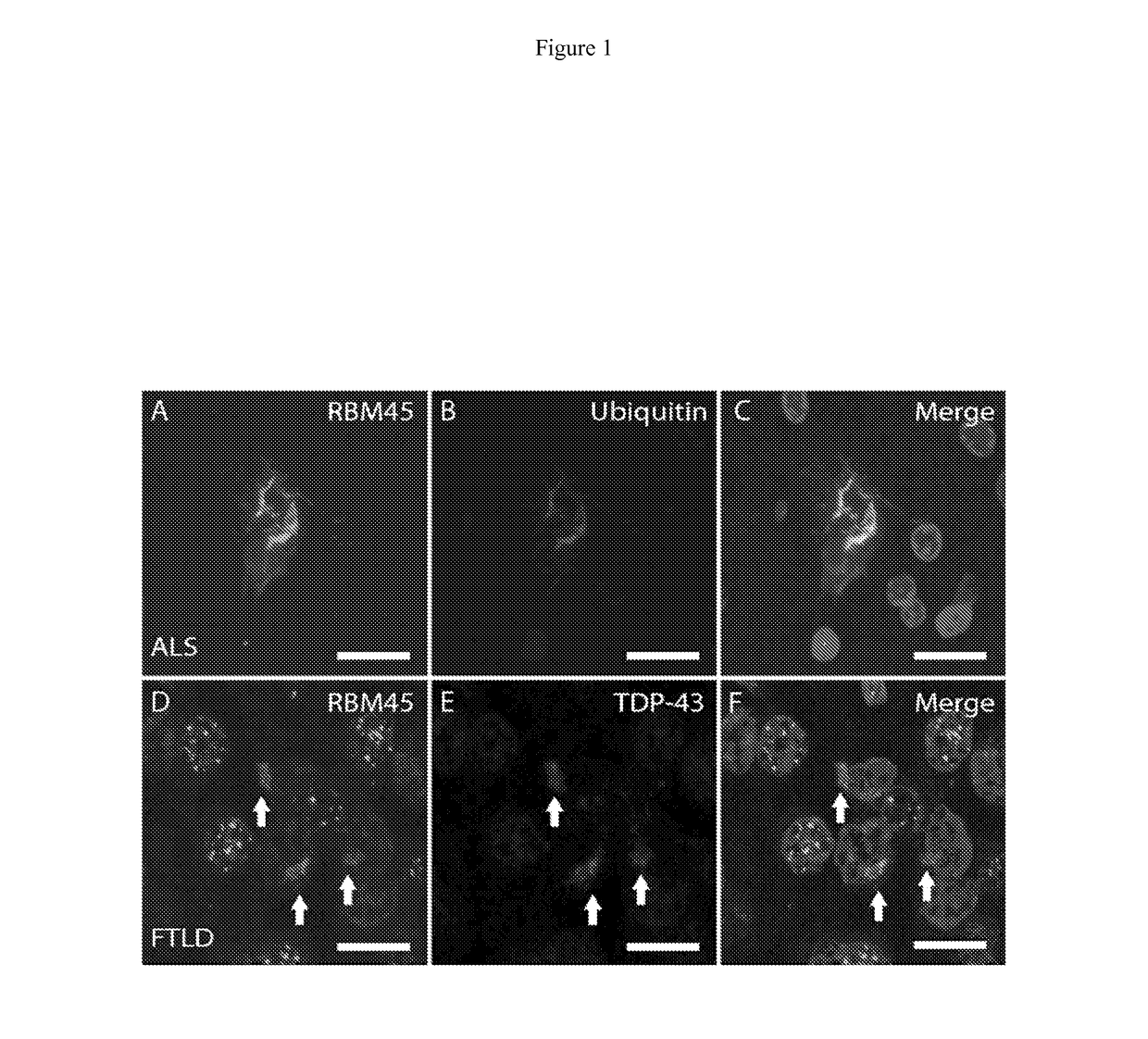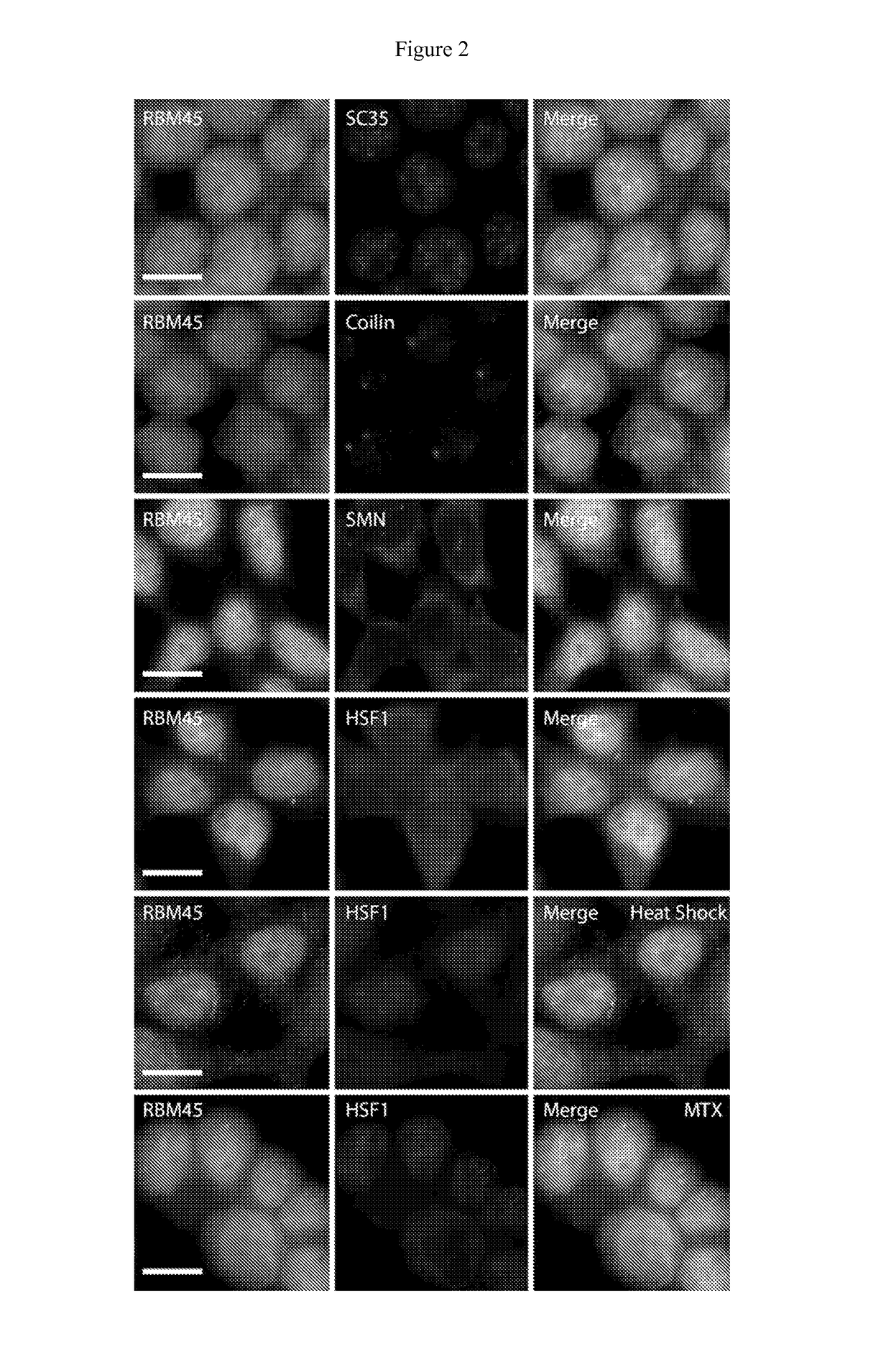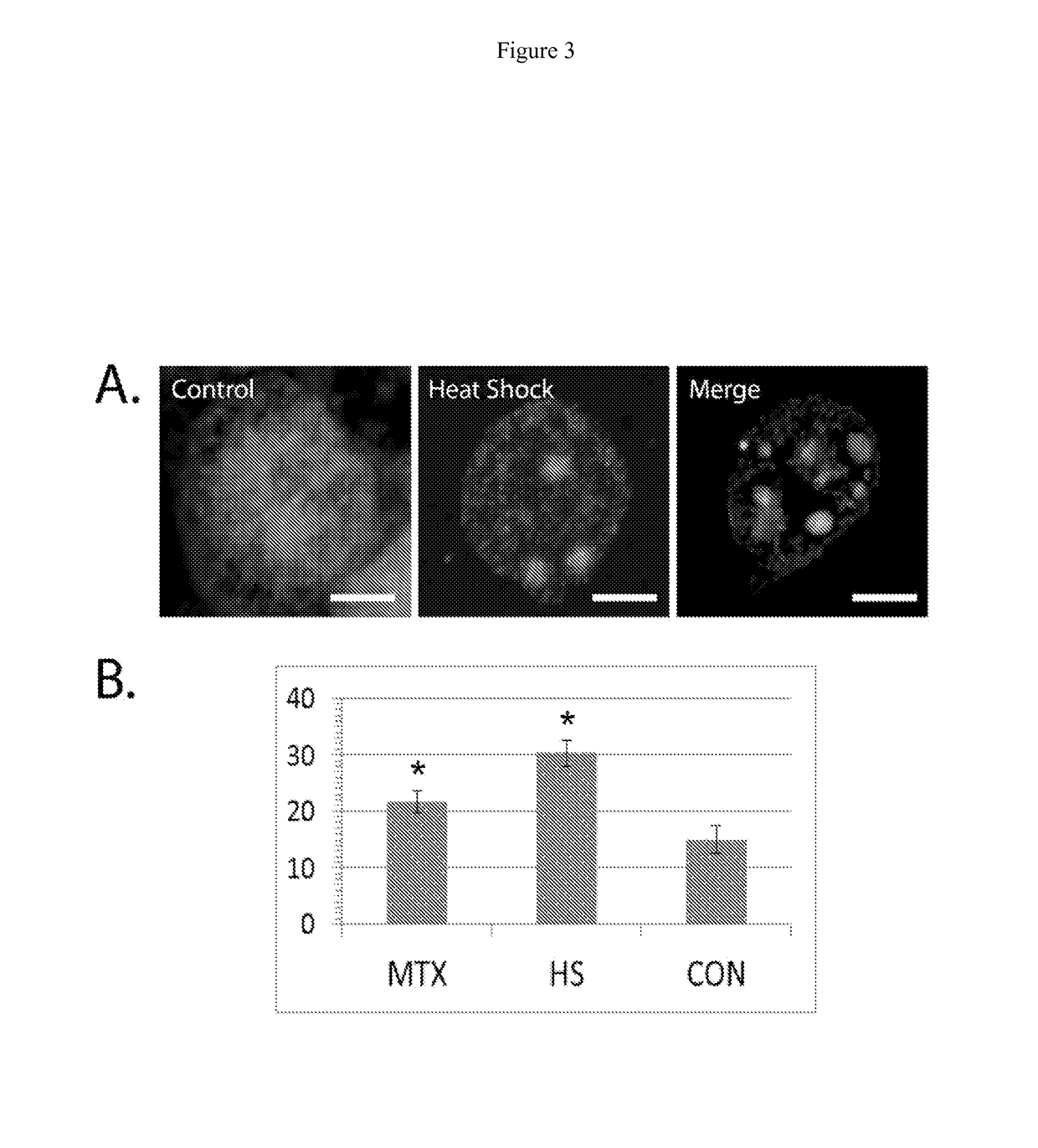Nuclear stress response in motor neuron disease and other neurological diseases
a technology of neuron disease and nuclear stress response, applied in the field of medicine, can solve the problems of nsbs adversely affecting therapeutic interventions, nsbs is not entirely understood, and nsbs may not be able to achieve the effect of reducing severity, slowing the progression of the condition, and treating the condition
- Summary
- Abstract
- Description
- Claims
- Application Information
AI Technical Summary
Benefits of technology
Problems solved by technology
Method used
Image
Examples
example 1
Overall
[0112]Amyotrophic lateral sclerosis (ALS) is the most common form of adult-onset motor neuron disease. A pathological hallmark of the disease is the presence of inclusions containing RNA binding proteins in neurons and glia. One such protein is the RNA binding motif protein 45 (RBM45). The inventors have identified this protein as a putative CSF biomarker of ALS and showed that RBM45 pathology is a common phenomenon in ALS, FTLD, and AD. To investigate the biological functions of RBM45 and the mechanisms of inclusion formation, the inventors performed immunohistochemistry on neurodegenerative disease patient tissue, immunocytochemistry in cultured cells, digital deconvolution, and image analysis. The inventors' results show that RBM45 exhibits a speckled staining pattern in the nucleus of patient tissue that is distinct from cytoplasmic inclusions. Results from immunocytochemistry experiments demonstrate that this pattern corresponds to the incorporation of RBM45 into nuclear...
example 2
Methods
[0113]Paraffin-embedded lumbar spinal cord tissue sections from sporadic ALS, FTLD, and control cases were subjected to immunohistochemistry using multiple affinity-purified anti-RBM45 rabbit polyclonal antibodies and mouse monoclonal antibodies to SC35, Coilin, SMN, and HSF1. The number of RBM45-positive puncta in neurons of these tissue sections were counted for quantitative comparison. Other examples of anti-RBM45 antibodies include but are not limited to ab105770 and ab123912 from ABCAM; sc-132421, sc-132422, sc-132423, sc-102076 from SANTA CRUZ BIOTECHNOLOGY; and HPA020448 and AV41154 from SIGMA ALDRICH.
[0114]An imaging-based approach combining immunofluorescence microscopy (IF), digital deconvolution (DD), and automated image analysis (IA) is used to examine RBM45 redistribution and colocalization with markers of subnuclear structures in response to heat shock and mitoxantrone (topoisomerase II inhibitor, genotoxic stress).
[0115]For immunocytochemistry experiments, HEK2...
example 3
Results
[0118]RBM45-positive nuclear puncta do not label for several well-studied subnuclear structures. RBM45 distribution does change in response to heat shock and other stressors and under these conditions closely resembles what has been seen in human post-mortem tissue.
[0119]Results indicate that RBM45 is a previously-unidentified component of nuclear stress bodies. The distribution of RBM45 changes in response to cellular stress in ways that favor the appearance of RBM45-positive nuclear foci. This pattern is similar to that of HSF1, suggesting the incorporation of RBM45 into NSBs. HSF1 is critical to the formation of NSBs and seems to interact with RBM45. A similar pattern is seen the dentate gyrus of FTLD patients, suggesting that nuclear stress body formation is initiated by the pathological cascade accompanying FTLD and related disorders. While not wishing to be bound by any particular theory, chronic stress may cause persistent association of RBM45 molecules, which leads to...
PUM
| Property | Measurement | Unit |
|---|---|---|
| fluorescence microscopy | aaaaa | aaaaa |
| imaging analysis | aaaaa | aaaaa |
| nuclear stress response | aaaaa | aaaaa |
Abstract
Description
Claims
Application Information
 Login to View More
Login to View More - R&D
- Intellectual Property
- Life Sciences
- Materials
- Tech Scout
- Unparalleled Data Quality
- Higher Quality Content
- 60% Fewer Hallucinations
Browse by: Latest US Patents, China's latest patents, Technical Efficacy Thesaurus, Application Domain, Technology Topic, Popular Technical Reports.
© 2025 PatSnap. All rights reserved.Legal|Privacy policy|Modern Slavery Act Transparency Statement|Sitemap|About US| Contact US: help@patsnap.com



